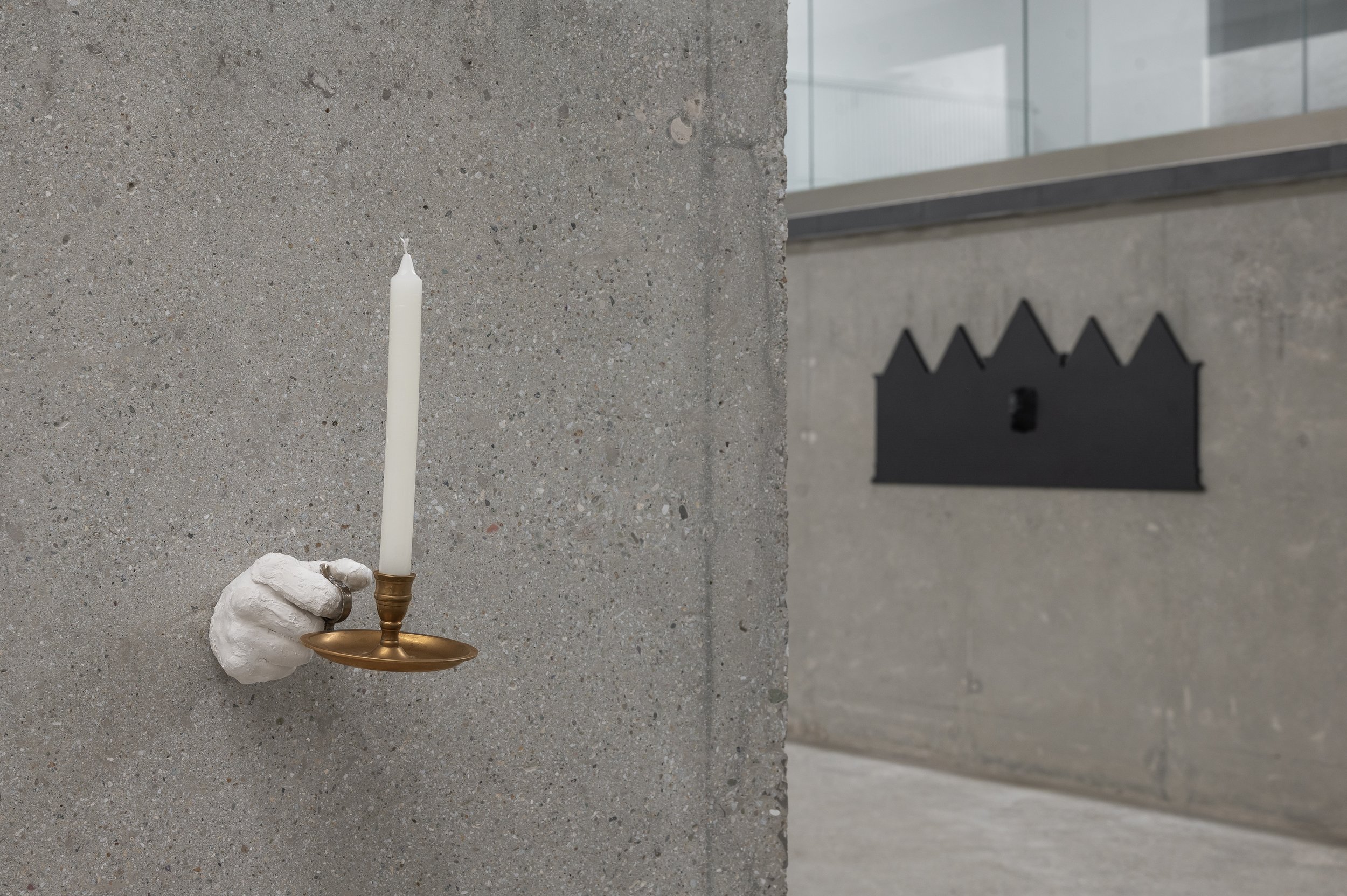Tudor Ciurescu "ICARUS"
Curated by Niki Bernath
Exhibition text by Claire Koron Elat
Visual identity by Jordi Theler
On view: Sep 7th - Oct 15th 2023
The post-state of an after-party that followed an after-party can be eerie. The aftermath of euphoria where everything is hazy, veiled with feelings of disintegration. Physical and cognitive disconcertments lead to nostalgia, and nostalgia leads to gloom, and gloom might lead to the uncanny. Being confronted with discomforting emotional conditions and desires that are familiar but usually experience displacement conjures up an internal uncanny valley, which only exists within the limits of your own corporeality. The ultimate sinister experience, however, is when the valley grows beyond your individual bodily constraints and reaches the outside world.
In Tudor Ciurescu’s solo exhibition titled “ICARUS” curated by Nikolas Bernath at VUNU Gallery, these uncanny states of the self and, more importantly, the world at-large act as a starting point for his artistic research that has been materialized in sculptures, paintings, and prints. The show’s title is a reference to Icarus from Greek mythology who together with Daedalus was imprisoned by the king of Athens. Icarus and Daedalus escaped using wings, which Daedalus constructed from feathers, threads, clothes, and beeswax. Despite Daedalus’s instructions not to fly too close to the sun, Icarus did precisely that, which caused the beeswax in his wings to melt. Icarus fell from her sky into the sea and drowned. The painting Angel, for instance, is one of many references in the show to the tale. Produced after he lost one of his closest friends and his grandmother within a short time period, the work celebrates imperfections, as the angel was painted freehand, somewhat resembling a sketch by a child, although angels are usually associated with perfection and flawlessness. For Ciurescu, the ancient tale of Icarus has not lost its actuality. The artist refers it to today’s society where you are told not to fly too “high” but also not too “low.”
The sculpture TRAUM (all works 2023)—a small, leaking gas tank that resonates sound when a person walks around it—alludes to the notion of the uncanny valley, which was first coined in a 1970 essay by Japanese robotics professor Masahiro Mori, in its title. Träume (plural for Traum, the German word for dream) can often be the most uncanny circumstances one can find themself in in the real world—although a dream state is technically not reality. Yet these dreams often work with derivatives of real situations, that you have encountered at some point in the past, inducing a sense of familiarity that sets the path to the uncanny valley. Since according to Freud “the Uncanny” is that class of the terrifying which leads back to something look known to us, something that once was familiar and has suddenly become unfamiliar, frightening, novel, dreams might be the ideal situation to experience this opposite of heimlich, lingering at the border of the real world and the imaginary. Similarly, Ciurescu utilizes familiar objects or personal memories and recontextualizes them, ascribing them a status of novelty. DUSTULATOR, a large cross-shaped steel sculpture that has an angular structure attached to the lower end of the cross, alluding to a chair-like formation, is related to the artist’s family and his upbringing with orthodox priests. With the cross as a symbol for fear and power, the un-sittable “chair” that is a part of it weakens the familiar association to power through creating an unexpected or novel moment, as the chair’s usual function has been removed. If a subject who would be expected to sit on this chair, such as a priest, tried to use it, they would fall into its hollowness—similar to how Icarus plunged into the sea.
Another crucial influence for the show is the 2012 film “Project X,” in which a group of teenagers tries to make themselves unforgettable through throwing a party that quickly escalates with a car drowning in a swimming pool, among other escapades. With the exhibition space being a former swimming pool as well as a small sculpture titled TBC, which is a diorama of icarus falling into the “Project X” pool, Ciurescu includes a two-fold reference of this pop cultural moment in the show. The aesthetic sensibility of Ciurescu’s works is heavily rooted in contemporary internet and digital culture. Sourcing from platforms such as Reddit, Tumblr, or The British Library, many of the works are—although not overtly—related to memes or specific conversations in chat forums that lead into creepy, mythical, or cursed spheres. The Generative Portrait series, for example, is based on this image sourcing. To produce the prints, the artist built an AI bot that he has fed with images of his works and other internet imagery and then asked the bot to do a self-portrait of itself. The AI ended up generating sinister images with faces that mainly consist of a black hole or zoomed in parts of the face anatomically do not make sense. They appear like scenes out of an uncanny dream or as if they resemble beings that might inhabit the uncanny valley.
SUPPORTED BY SLOVAK ART COUNCIL


























